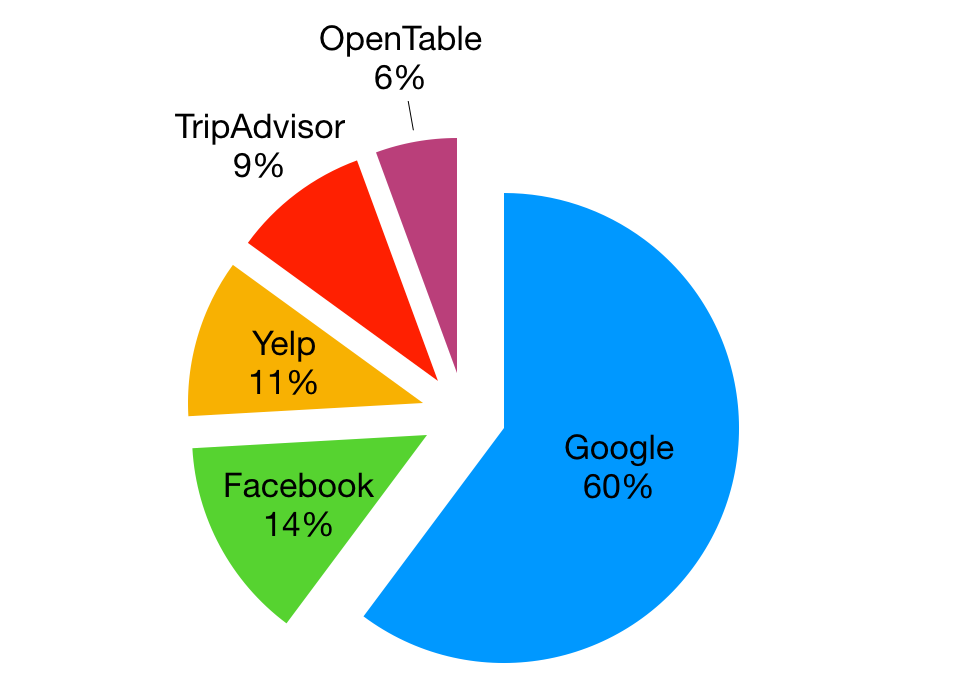Small businesses can struggle to get an edge over larger competitors.
They don't have the built-in name recognition of a big brand. Advertising dollars are limited. The latest technology is expensive beyond reach. And many aren't able to compete on price.
But there is one area that the big chains consistently overlook—online review sites like Yelp, OpenTable, and TripAdvisor. These sites can be the great equalizer by allowing small businesses to advertise a superior customer experience at little to no cost.
And the best part? Most of the big companies don't get it.
I recently partnered with Jess Greene-Pierson, Director of Go To Market at the customer insight software firm, Womply. We facilitated a webinar to answer three key questions:
Which review site do customers depend upon the most?
How can negative reviews help your business?
How can you earn more positive online reviews?
You can watch the webinar to get the full story, or read the highlights below.
Which review site do customers depend upon the most?
This data comes from a recent survey I conducted of over 1,000 adults in the United States. You can read the full story or just skim below.
The number one review site, by far, is Google:
What makes it so popular is Google is the place to go when people search reviews without realizing they were looking for reviews. You can try this yourself with a little experiment:
Think of a type of business you might need to find (restaurant, dry cleaner, mechanic, or anything else).
Try Googling the type of business. Ex: "pet store"
Notice what comes up after the ads.
Google suggests top-rated businesses with high ratings that it things are near you. The results show the star rating for each business along with a handy map.
A couple of years ago, I needed to find a pet store as I was driving through Tucson, Arizona. Look at what happens when I Google "pet store tucson."
Notice these are all local businesses. The big chains like Petco and Petsmart don't show up. This is the small business advantage!
How can negative reviews help your business?
Many small business owners live in fear of a negative review.
Customers exaggerate. Some reviews are fake. Negative reviews can feel like a personal attack. And even legitimate complaints stay online long after you've learned from the problem and fixed the issue.
The good news is negative reviews can actually help!
Researchers at Northwestern University discovered the optimum rating on an online review site is 4.2-4.5 stars. That's because 80 percent of customers seek out negative reviews when evaluating a business. They want to see what customers complain about and how the business responded.
During the webinar, Jess shared an example from Seafood Kitchen in Atlantic Beach, Florida. The owner, Nathan Stuart, regularly responds to negative reviews and asks upset customers to give the restaurant another try.
One customer, Alvin F., changed a two-star Yelp review to four stars as a result of Nathan’s outreach. This is arguably more powerful than a five-star review because it shows a customer was upset (that happens) and the owner made an effort to make things right.
You can’t expect every customer to change their rating, but you can still make a positive impression on other customers by responding professionally and helpfully. It turns out, there's a quirk in psychology that makes other customers more likely to empathize with you if you handle the complaint politely without getting defensive.
How can you get more reviews of your business?
Jess suggested several straightforward dos and don'ts on the webinar:
Yelp specifically forbids asking customers for reviews, but many major platforms are either silent on the issue or actively encourage it. Google, the most important site for reviews, actually publishes this guide to help you get more!
Take Action
To summarize, your business is more likely to get noticed if:
You have an active profile on Google and lots of positive reviews.
A few negative reviews can give your business credibility.
Be proactive, but professional, about asking customers to review your business.
If you don't have an active Google My Business listing, you can easily get started with this handy guide from Womply.
You can also watch the webinar replay.










